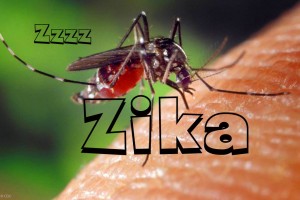- Home
- Editorial
- News
- Practice Guidelines
- Anesthesiology Guidelines
- Cancer Guidelines
- Cardiac Sciences Guidelines
- Critical Care Guidelines
- Dentistry Guidelines
- Dermatology Guidelines
- Diabetes and Endo Guidelines
- Diagnostics Guidelines
- ENT Guidelines
- Featured Practice Guidelines
- Gastroenterology Guidelines
- Geriatrics Guidelines
- Medicine Guidelines
- Nephrology Guidelines
- Neurosciences Guidelines
- Obs and Gynae Guidelines
- Ophthalmology Guidelines
- Orthopaedics Guidelines
- Paediatrics Guidelines
- Psychiatry Guidelines
- Pulmonology Guidelines
- Radiology Guidelines
- Surgery Guidelines
- Urology Guidelines
Mice Experiments show how Zika invades placenta, fetus to kill to-be born child

Miami : Experiments using lab mice show how the Zika virus travels through the bloodstream, multiplies in the placenta and invades the brain of the developing fetus, stunting growth or causing death, researchers said Wednesday.
The study, published in the journal Cell, could help scientists better understand the mosquito-borne infection and develop vaccines to prevent it.
"This is the first demonstration in an animal model of in utero transmission of Zika virus, and it shows some of the same outcomes we've been seeing in women and infants," said co-senior author Michael Diamond, a professor of medicine, molecular microbiology and pathology and immunology at Washington University in St. Louis.
Mice were infected with a strain of Zika that was 97 percent similar to the kind circulating in Brazil, where thousands of babies are suspected of having been born with unusually small heads a condition known as microcephaly since last year.
In one of the experiments, researchers used female pregnant mice that were genetically engineered to lack the ability fight off Zika.
The virus killed most fetuses within a week, the study found. Offspring that survived had severely stunted growth.
In another experiment using genetically normal mice, the fetuses did not die but showed impaired growth and neuron damage.
The virus's genetic material persisted in fetal bodies and brains though day 16 of gestation, a critical period for brain development.
In neither experiment did the mice develop microcephaly, but researchers said this could come down to biological differences between people and mice.
"Unlike in humans, a significant amount of neurodevelopment in mice actually occurs after birth, especially in the cerebral cortex, which is the part of the brain damaged in microcephaly," Diamond said.
But researchers were particularly intrigued by the way Zika expanded inside the placenta, an organ that develops inside the uterus during pregnancy and nourishes the fetus.
Levels of Zika virus in the mouse placentas were 1,000 times greater than in the blood of pregnant mice.
"Most of the time, the placenta is an effective barrier between the mother and her fetus. But Zika is able to overcome it," said Indira Mysorekar, aco-senior author from Washington University School of Medicine.
"We see the virus in the fetal blood vessel lining and then in circulation, and soon after, we see that it's able to go to the brain."
Researchers say they hope their findings could be used to test experimental vaccines for effectiveness, and also therapeutics that may be able to stop the chain of transmission from mother to fetus.

Disclaimer: This site is primarily intended for healthcare professionals. Any content/information on this website does not replace the advice of medical and/or health professionals and should not be construed as medical/diagnostic advice/endorsement or prescription. Use of this site is subject to our terms of use, privacy policy, advertisement policy. © 2020 Minerva Medical Treatment Pvt Ltd